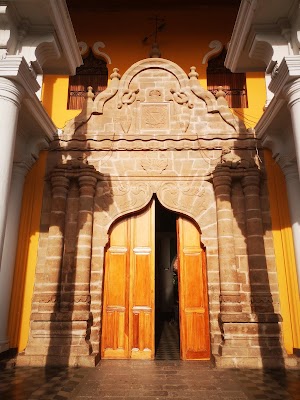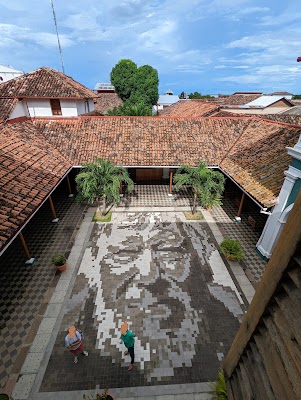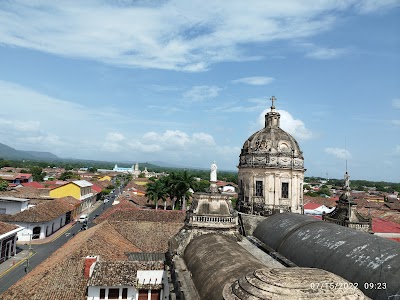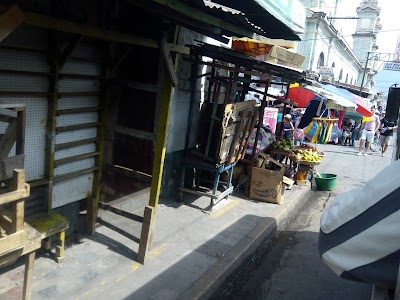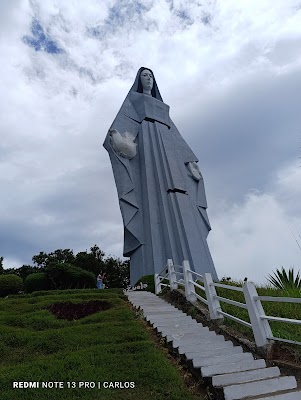Casa de los Leones (Casa de los Leones)
Overview
**Casa de los Leones: A Jewel of Granada, Nicaragua**
Nestled in the vibrant heart of Granada, Nicaragua, **Casa de los Leones** is an architectural and historical gem that attracts visitors from all corners of the globe. Founded in 1524 by Francisco Hernández de Córdoba, Granada is one of the oldest colonial cities in the Americas, and Casa de los Leones plays a vital role in its rich cultural tapestry, offering a captivating glimpse into Nicaragua's colonial past.
Originally built in the 18th century, **Casa de los Leones** is a stunning representation of the city's Spanish colonial heritage. This grand mansion derives its name from the striking stone lion statues that stand guard at its entrance, a feature that has fascinated visitors for centuries. These lions symbolize strength, pride, and protection, encapsulating the spirit and history of this magnificent residence.
As you step through the ornate doorway into the courtyard, you are transported back in time. The house showcases beautifully preserved colonial architecture, characterized by thick adobe walls, wooden beams, and terracotta-tiled roofs. The spacious courtyard, once bustling with household activity, now serves as a tranquil oasis adorned with lush greenery, vibrant flowers, and the gentle sounds of a traditional Nicaraguan fountain.
Beyond its historical significance, **Casa de los Leones** has evolved into a vibrant cultural hub. Meticulously restored, the mansion now functions as a cultural center and art gallery, featuring works from both local and international artists. Visitors can explore a variety of exhibition rooms displaying a diverse range of paintings, sculptures, and historical artifacts, providing a fascinating insight into Nicaragua's artistic endeavors and historical narrative.
One of the mansion's most striking elements is its harmonious blend of preservation and adaptation. While the exterior and common areas retain their colonial charm, some rooms have been modernized to accommodate contemporary exhibitions and events. This dynamic space thrives with regular cultural activities, including music performances, dance shows, and literary readings, ensuring that Casa de los Leones remains a lively part of Granada's cultural landscape.
Historically, **Casa de los Leones** has been central to the social life of Granada. In its early days, the mansion served as the residence for prominent families and was a gathering place for social and political discussions. It has witnessed the city's transformation through various historical epochs—from the colonial period to the tumultuous years of the Nicaraguan Civil War—ultimately becoming the peaceful, tourist-friendly destination it is today.
Moreover, Casa de los Leones boasts an ideal location for tourists eager to explore the wider context of Granada. Just a short walk from the central park, **Parque Central**, and notable landmarks such as the Granada Cathedral and La Merced Church, the mansion provides easy access for visitors to embark on a comprehensive tour of the city, capturing the essence of Granada's rich history, stunning architecture, and vibrant culture.
As you wander through the mansion's intricate interiors, marvel at the artwork, relax in the peaceful courtyard, and participate in the lively cultural activities hosted here, you will discover that **Casa de los Leones** promises an enriching experience that seamlessly blends historical education with cultural entertainment. In its storied halls, you can almost hear the whispers of the past and feel the legacy of the many generations who have walked these paths before you.
In conclusion, **Casa de los Leones** is not merely a historical building; it is a living museum that reflects the soul of Granada. Whether you're a history enthusiast, an art lover, or simply a curious traveler, a visit to this iconic mansion is certain to leave a lasting impression. The unique blend of historical authenticity and contemporary cultural vibrancy makes Casa de los Leones a must-visit destination, offering a fascinating window into the heart of Nicaragua’s colonial and modern heritage.


